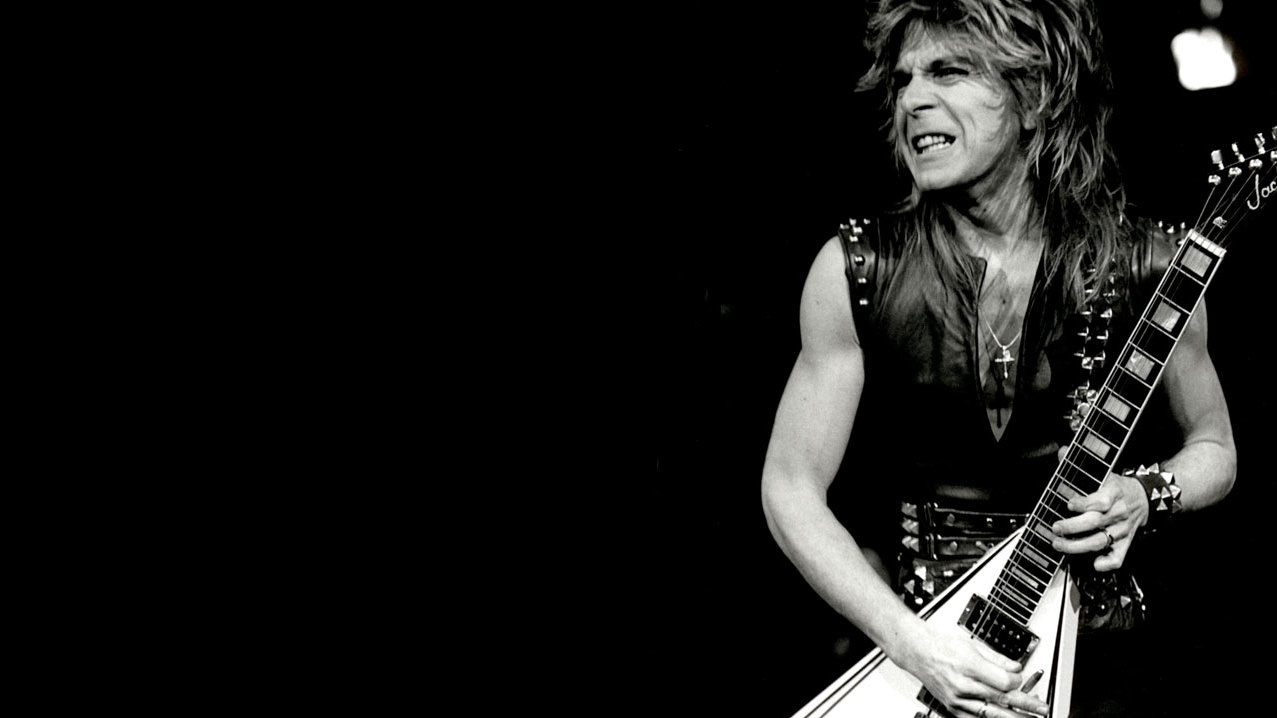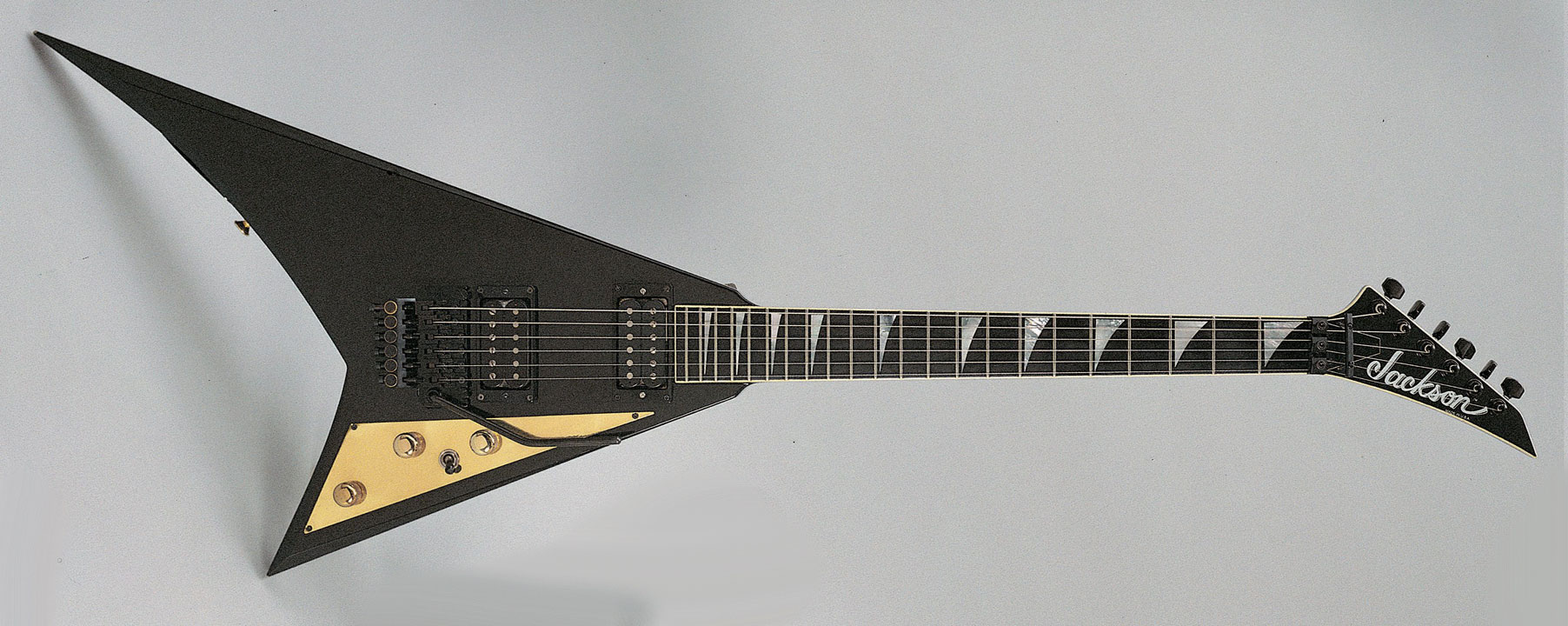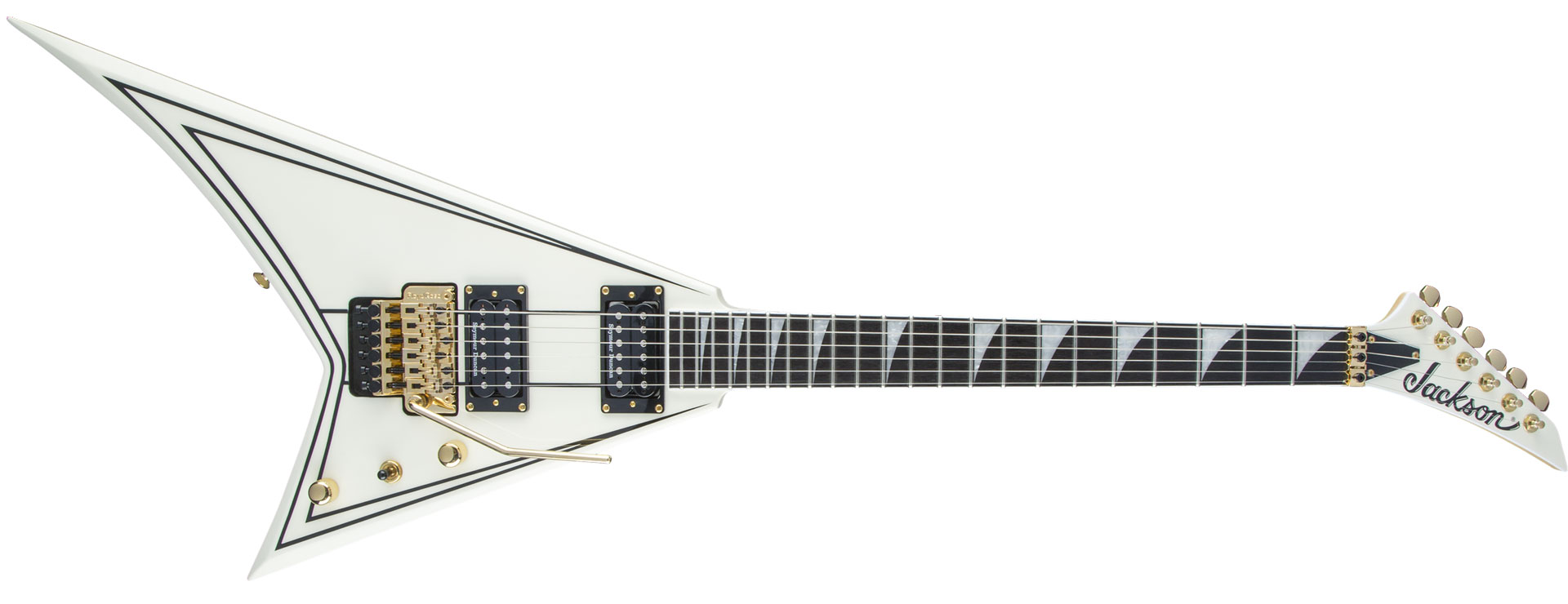Anyone with more than a passing interest in hard rock and metal knows who Randy Rhoads was. Born Randall William Rhoads on December 6, 1956 he was the kid from Quiet Riot that caught the attention of Ozzy Osbourne, and accompanied Sabbath’s damaged soul on the best solo work of his career. He died in a plane crash while on tour with Ozzy in Florida on March 19, 1982. So far, so Wikipedia.
Rhoads’ skill as a guitarist, honed with his passion for classical music, isn’t the only thing he left behind for those who followed. He also helped create possibly the most “metal” guitar ever. Yes, the Gibson Flying V came first, it first appeared in 1958, and BC Rich had already spawned “shape” guitars like the Mockingbird… but the Jackson Randy Rhoads was the first pointy guitar specifically tailored to a metal virtuoso.
While we fully intend to tell its story, the road to the Rhoads is a long and winding one, and the kid’s guitar history is fascinating… so bear with us while we set the scene.
Despite its legacy, the Jackson RR wasn’t the guitar most associated with Randy during his lifetime. That exalted slot in his arsenal goes to his ‘74 Gibson Les Paul Custom in a yellowed Alpine White finish. Gibson had problems with white finishes fading and staining with nicotine; sometimes the lacquer would pick up the colour of the furry fabric inside their guitar cases. In the case of Alpine White Customs, the finish would yellow to a creamy aesthetic. The result actually looked cooler than stock. Just look at Randy and Steve Jones of the Sex Pistols Customs for evidence…
Randy also owned a Fender Stratocaster and a 50s Gibson Les Paul Custom aka the “Black Beauty” so called because, well, it was all-black and looked the absolute balls. Randy only used the 50s Custom for photographs… and here’s why. Your Gibson Black Beauty was also nicknamed “The Fretless Wonder”. The then Kalamazoo Michigan-based brand scored a spectacular own goal by making their top-of-the-range Custom virtually unplayable by installing ultra-low frets. This spec decision was fine for single-note and chord-comping jazz cats like Les Paul himself, but, blues, country and rock’n’roll guitarists actually like to bend strings and that stuff works best on a guitar with big frets.
The lineage of his iconic Jackson RR can be traced back to the “Polka Dot” V he’s grasping on the cover of the Ozzy Osbourne/Randy Rhoads Tribute album that was released in 1987, exactly five years to the date of his death. Built by fellow guitarist Karl Sandival, the black V, acne’d with white dots established some of the features later found on the Jackson-built RR: a slim neck, two humbuckers and a vintage, so non-locking, Fender-style vibrato.
Crucially, the fingerboard had a ultra-flat 17” radius. For shredders, the flatter the ‘board the lower you can get the action, and the less likely you are to get buzzing and string choking while widdling above the 12th fret. A vintage Fender has a 7.25” radius which can make a low action hard to achieve. Modern Fenders run from 9.5” to 10” and even 12” radius depending on model, and whether Eric Johnson was involved in the guitar’s development. Gibson guitars are 12” with a lower string tension than Fenders, hence a low action and easy string bending. Most modern rock and metal guitars run from 14” to 16” and have big ass jumbo frets for ultimate playability. Some brands, like Jackson, employ a compound radius from say 12” over the first few frets - for stress-free chording - to 16” at the dusty end of the ‘board for slick action and bending.
Completed by September, and damaged and repaired just three weeks later, Randy used the polka dot V on his ‘79 British tour with Ozzy. Yet, by December that year he already had his heart set on a new custom guitar, a pointy pinstriped thing that became a metal icon…
The first guitars Jackson built for Ozzy’s shredder weren’t designated “the Randy Rhoads”. That obvious affiliation didn’t happen until after Randy’s death when his design became a production model. That’s why the guitar isn’t a true signature model. He didn’t sign off on it. It’s more of a tribute… or a legacy. Anyway, Randy christened his Jackson prototype “The Concorde”, basically because he’d flown on its aviation namesake after the UK tour.
How did the association with Jackson go down? Long story short, a luthier called Wayne Charvel sold his eponymous guitar parts business to a fella called Grover Jackson. Karl Sandoval, who worked with Charvel left the business with Wayne. So, Randy decided to give Grover a shot at nailing his new axe.
Just back from the British tour, Randy dropped in on Jackson in San Dimas, California, a couple of days before Christmas, 1980. “He brought a little scrap of paper that had four to five line drawings, saying, ‘This is kinda what I want this guitar to look like,’” Jackson later told Premier Guitar.
- What it's like to have Randy Rhoads as a guitar teacher…
- The Guitars That Built Rock: The Fender Stratocaster
- The Guitars That Built Rock: The Gibson Flying V
- The Top 10 best Randy Rhoads guitar solos
Randy had taken the basic shape of a Gibson Flying V but made it asymmetrical. Unlike the symmetrical Flying V, the Concorde’s top body horn was longer than the bottom pointy bit.
As it developed, it was decided that the guitar would have a neck thru-body construction. That means the neck was elongated into a maple centre core that ran right down to the guitar’s tailpiece. Maple “wings” we’re then glued on to create the Concorde’s body shape. The guitar was then given what would become Jackson’s trademark pointy headstock.
“Randy had that body shape drawing and it needed something that sort of matched it in radical-ness,” recalled Jackson. Look at it now and you’ll notice the head is basically a modern tweak on the Gibson Explorer hockey stick affair.
The prototype was heavy - the ahem, Colossus of Rhoads - as the body was forged from chunks of maple. It had a fat neck profile with the compound radius fingerboard - vital statistics 12” to 16” - that Jackson still use today and a pair of Seymour Duncan ‘buckers, a “Distortion” model in the bridge position and a “Jazz”.
Randy took delivery of the first Jackson in early 1981 while he was touring Europe with Ozzy. Aside from some playability issues - he struggled to reach the upper frets - he was bugged to find that fans assumed he had cut up a Gibson Flying V to create the Concorde. Randy was not a big lad so the guitar’s weight and huge body swamped a guy who already looked tiny behind a Les Paul Custom. In October ‘81, Rhoads and Jackson worked on a better mousetrap, giving the Concorde a sleeker look with slimmer sharper body points. The lower body point was shortened to make it look even less like a modified Flying V. Randy took delivery of Concorde MKII on December 27.
It apparently took Randy a while to bond with his second Jackson but guitarists who followed in his wake had no such qualms. Over the years, the hirsute hoards of RR fondlers has included former Kiss man Vinnie Vincent, Corey Beaulieu of Trivium, Phil Campbell of Motörhead, Phil Demmel of Machine Head - and his signature Jackson Demmelition V - and Matthew Tuck of Bullet for My Valentine who also has a signature Jackson. It also influenced countless designs by Yamaha, Vintage, Dean and ESP… check out the latter brand’s Dave Mustaine Axxion.
What’s interesting is that Grover Jackson later admitted that he put his surname on the RR’s headstock because he was worried it could damage the Charvel brand as it was so radically different from the Strat-style guitars the company he bought over was best known for. He needn’t have worried. The RR is still going strong, is available in a dozen guises, and remains the coolest way to scream “I play metal!”



